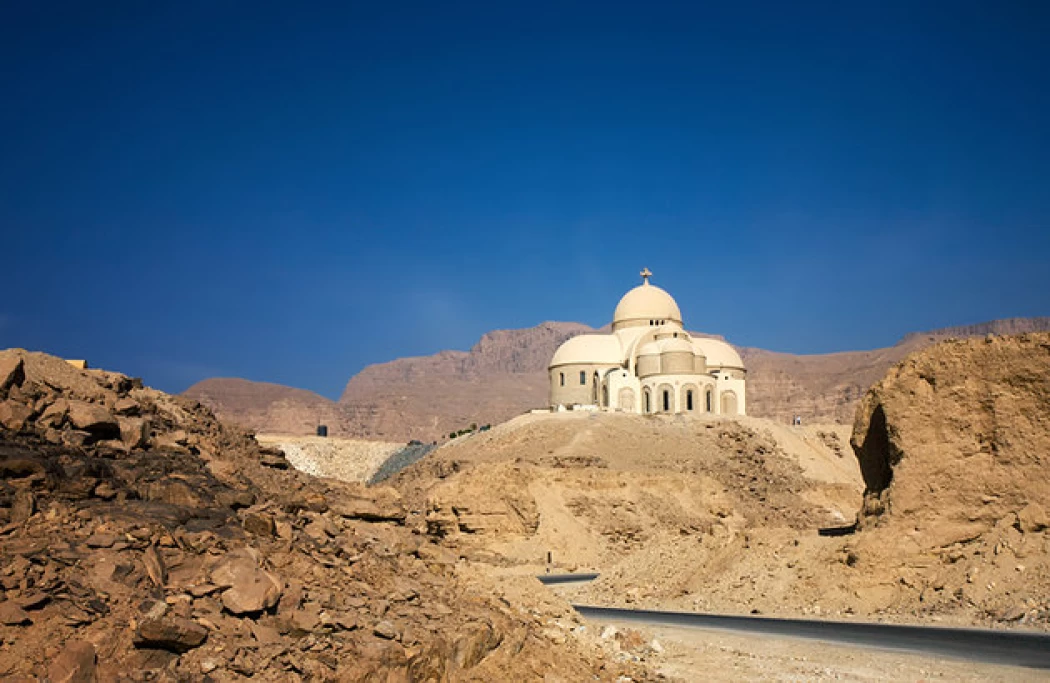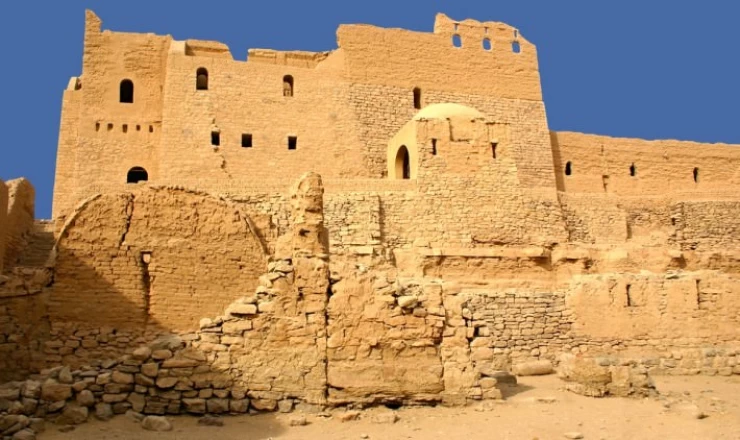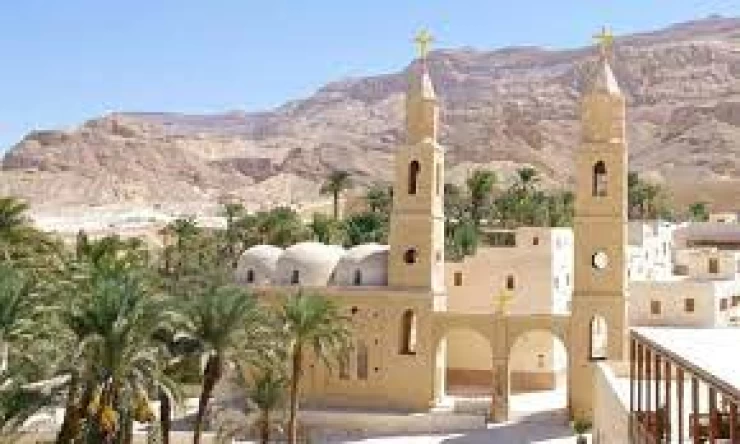
Monastery of Saint Paul
Monastery of Saint Paul
Originally from Alexandria, Saint Paul - not to be confused with the Apostle Saint Paul - was a member of a wealthy family. At the age of only 16, he retired to the desert, tired of the persecutions by the Romans, becoming the first hermit known.
According to the legend, when Paul died, it was Saint Anthony who made the long journey through the mountains to give him a burial.
The two monasteries are still connected today by a steep road and, even if the two caves are less than 40 km away in line with the area, the route on the ground exceeds 80 km.
It is possible to follow the feat of Saint Anthony and walk the rocky heights between the two monasteries but it takes two days to complete the journey, so it is important to equip yourself with tracking equipment.
The monastery of Saint Paul is built around the cave where he lived for decades. The cave of ST. Paul is located inside the church, full of altars, candelabra, icons, and frescoes. Ostrich eggs hang from the attic of the chapels, symbolizing the resurrection. In the cave, there is a sarcophagus that is believed to contain the relics of the saint.
Beyond the church, the imposing five-story tower is certainly of interest, supplied with water through a hidden canal, which served to protect the monks from the incursions of the Bedouins.
The best way to reach the Monastery of Saint Paul is to rely on organized trips or rent an off-road vehicle. There are connections from Cairo, Beni Suef, or Hurghada, with the destination Zafarana. From Zafarana take the road to the monastery, located about 13 km inland.
Latest Articles
Admin
Seabourn Sojourn Cruise Stops in Safaga Port
The Seabourn Sojourn, the flagship vessel of Seabourn Cruise Line's ultra-luxury fleet, was built in 2008 at the T. Mariotti shipyard in Genoa, Italy. Measuring 198 metres, it can accommodate up to 450 guests in its 225 spacious all-suite staterooms.
Admin
Norwegian Sky Cruise Stops in Safaga Port
Norwegian Cruise Line operates a cruise ship called the Norwegian Sky. It was constructed in 1999 and can accommodate 2,004 passengers in addition to 878 crew members. The ship has several dining establishments, lounges and bars, a spa and fitness center, swimming pools, and a number of entertainment areas.
Admin
Explora II Cruise Stops in Safaga Port
Explora II, the second vessel in the Explora Journeys fleet, sets sail in 2024 to redefine luxury cruising. With 461 ocean-front suites, 9 culinary experiences, and 4 pools, this haven of sophistication and sustainability promises an unforgettable "Ocean State of Mind" journey to inspiring destinations.
Admin
Mein Schiff 6 Cruise Stops in Safaga Port
The Mein Schiff 6 is the latest cruise ship in the renowned TUI Cruises fleet, offering passengers a luxurious and sophisticated cruise experience. At 315 metres long, this floating resort features a range of dining options, entertainment, and recreational facilities, including a spa, fitness centre, and sports amenities.
Admin
Mein Schiff 4 Cruise Stops in Safaga Port
When the Mein Schiff 4 cruise ship docks in Safaga, Egypt, passengers are granted access to a realm of ancient wonders. Aboard this state-of-the-art vessel, guests can embark on meticulously curated shore excursions that showcase the region's most iconic landmarks, including the Giza Pyramids, the enigmatic Sphinx, and the remarkable tombs and temples of the Valley of the Kings in Luxor.
Admin
MS Europa Cruise Stops in Safaga Port
The Silver Moon, Silversea's latest flagship, is a luxury cruise ship that offers an exceptional travel experience for Venezuelans exploring Egypt. With a capacity of 596 guests and an impressive 40,700 gross tonnes, the Silver Moon maintains the small-ship intimacy and spacious all-suite accommodations that are the hallmarks of the Silversea brand.















